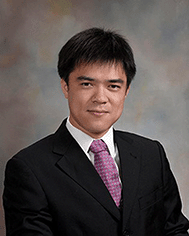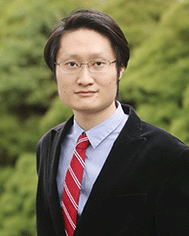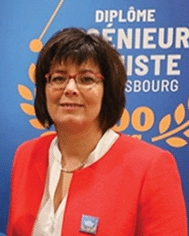Introduction to advanced functional nanomaterials for biomedical applications
Chenjie
Xu
 a,
Yu Shrike
Zhang
a,
Yu Shrike
Zhang
 b,
Sylvie
Begin
b,
Sylvie
Begin
 c and
Nguyễn Thị Kim
Thanh
c and
Nguyễn Thị Kim
Thanh
 *de
*de
aDepartment of Biomedical Engineering, City University of Hong Kong, 83 Tat Chee Avenue, Kowloon, Hong Kong SAR, China
bDivision of Engineering in Medicine, Department of Medicine, Brigham and Women's Hospital, Harvard Medical School, Cambridge, MA 02139, USA
cStrasbourg Institute of Physics and Chemistry of Materials, University of Strasbourg, 67034 Strasbourg cedex, France
dBiophysics Group, Department of Physics & Astronomy, University College London, Gower Street, London WC1E 6BT, UK
eUCL Healthcare Biomagnetics and Nanomaterials Laboratories, 21 Albemarle Street, London W1S 4BS, UK. E-mail: ntk.thanh@ucl.ac.uk
Nanotechnology has enabled significant progress in biomedical research within the last few decades. Indeed, materials at the nanoscale present unique and widely tunable physicochemical properties that allow numerous unconventional applications to be achieved, which are otherwise not quite possible at larger length scales. More recently, they have found additional usage when combined with other materials or technologies, enabling multiscale behaviours that are instrumental for applications that require multiplexed functionalities. Thus, the development and design of hybrid multifunctional nanomaterials have brought exciting innovations in nanomedicine, allowing breakthroughs in the potential treatment of many diseases.
This collection of reviews, minireviews, communications and research articles covers the rational design and syntheses of optical, electrical, magnetic and hybrid multifunctional nanomaterials for biomedical applications (e.g., diagnostics, therapies, drug delivery, theranostics, biosensing and regenerative medicine). Indeed, some nanoparticles, such as iron oxide, gold and carbon-based materials, are able to provide both therapy and imaging modes. Gold nanoparticles can be used as biosensors due to their surface plasmon resonance properties. Hydrogels, liposomes, capsules or polymeric nanoparticles may encapsulate active ingredients, drugs or even nanoparticles. From the nanomaterial perspective, we can roughly group them into inorganic, organic and biological nanomaterials.
Inorganic nanomaterials include mesoporous nanomaterials (silica, carbon etc.) and oxide, metallic, carbon-based and upconverting nanoparticles, which display high surface specific areas with optical, magnetic and electronic properties. Notably, T1 iron oxide nanoparticles can be fabricated as magnetic resonance imaging (MRI) contrast agents, a paradigm shift from potentially toxic gadolinium. The deep studies of differently shaped magnetic nanoparticles will help harness their full potentials. The stakes are the control of their size, shape and composition but also their combination to enhance their multifunctionality and, finally, their functionalization to provide good biocompatibility, biodistribution and possibly targeting efficiency. Notably, beside magnetic hyperthermia treatment, photothermal and photodynamic therapy have made significant advances with multifunctional carbon dots, composite enzyme nanogels, anthracene crosslinked nanocomposites and the rapid eradication of bacterial biofilms.
Organic/biological nanomaterials include cell-derived vesicles, lipid nanoparticles, polymer nanoparticles, dendrimers, amino acid-assembled nanoparticles, nucleic acid nanoparticles, hydrogel nanoparticles, etc. The most exciting notion also lies here in the combined usage of different materials to address different practical needs. A major challenge in nanomedicine is to design targeted nanoplatforms that allow diagnosis, therapy, and follow-up by imaging (theranostics) adapted to each patient and disease. For example, van der Ven et al. develop an injectable hydrogel system that delivers gold nanoparticle–miRNA drug complexes for the treatment of heart diseases. Besides the creation of new functional nanomaterials, we are also excited to see researchers further link their innovations with the actual needs of translational medicine, such as a nanoclay-containing hydrogel to promote muscle proliferation and differentiation.
There are many other topic areas that are worthy of inclusion but were omitted due to space restrictions. As guest editors of this themed collection, we would like to thank all of the authors for the high quality of their contributions. Furthermore, we would like to thank the editorial staff from Nanoscale for their support, as well as our reviewers. It is our hope that researchers in chemistry, biology, physics, materials, medicine and beyond will enjoy reading these articles and use them in the next generation of nanomaterials for medical applications.
| This journal is © The Royal Society of Chemistry 2022 |





![[thin space (1/6-em)]](https://www.rsc.org/images/entities/char_2009.gif) 000 citations. She has been Visiting Professor at various universities in France, Japan and Singapore. She has been invited to speak at over 270 institutes and scientific meetings. She has chaired and organised over 45 high profile international conferences. She is Editor-in-Chief of the Royal Society of Chemistry book series on Nanoscience and Nanotechnology. She has edited 7 themed issues, including the Nanoscale and Nanoscale Advances themed collection on “Advanced Functional Nanomaterials for Biomedical Applications” (2021), the Royal Society Interface Focus, “Multifunctional nanostructures for diagnosis and therapy of diseases” (2016), the Royal Society of Chemistry Faraday Discussion on “Physical Chemistry of Functionalised Biomedical Nanoparticles” (2014), the Royal Society of Chemistry Nanoscale themed issue on “Functional Nanoparticles for Biomedical Applications” (2013) and Philosophical Transactions of the Royal Society A issue on “Nanoparticles” (2010). She was the sole editor of two seminal books, Magnetic Nanoparticles from Fabrication to Clinical Applications in 2012 (ISBN 9781439869321) and Clinical Applications of Magnetic Nanoparticles in 2018 (ISBN 9781138051553). She is co-organising a Magnetic Carrier Meeting in June 2022 in London.
000 citations. She has been Visiting Professor at various universities in France, Japan and Singapore. She has been invited to speak at over 270 institutes and scientific meetings. She has chaired and organised over 45 high profile international conferences. She is Editor-in-Chief of the Royal Society of Chemistry book series on Nanoscience and Nanotechnology. She has edited 7 themed issues, including the Nanoscale and Nanoscale Advances themed collection on “Advanced Functional Nanomaterials for Biomedical Applications” (2021), the Royal Society Interface Focus, “Multifunctional nanostructures for diagnosis and therapy of diseases” (2016), the Royal Society of Chemistry Faraday Discussion on “Physical Chemistry of Functionalised Biomedical Nanoparticles” (2014), the Royal Society of Chemistry Nanoscale themed issue on “Functional Nanoparticles for Biomedical Applications” (2013) and Philosophical Transactions of the Royal Society A issue on “Nanoparticles” (2010). She was the sole editor of two seminal books, Magnetic Nanoparticles from Fabrication to Clinical Applications in 2012 (ISBN 9781439869321) and Clinical Applications of Magnetic Nanoparticles in 2018 (ISBN 9781138051553). She is co-organising a Magnetic Carrier Meeting in June 2022 in London.